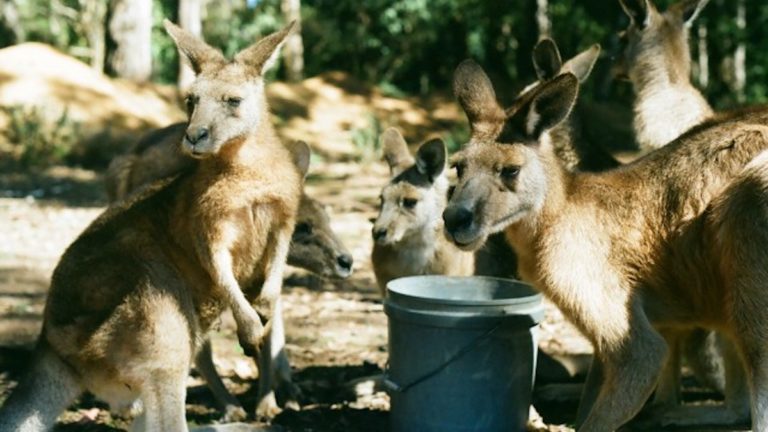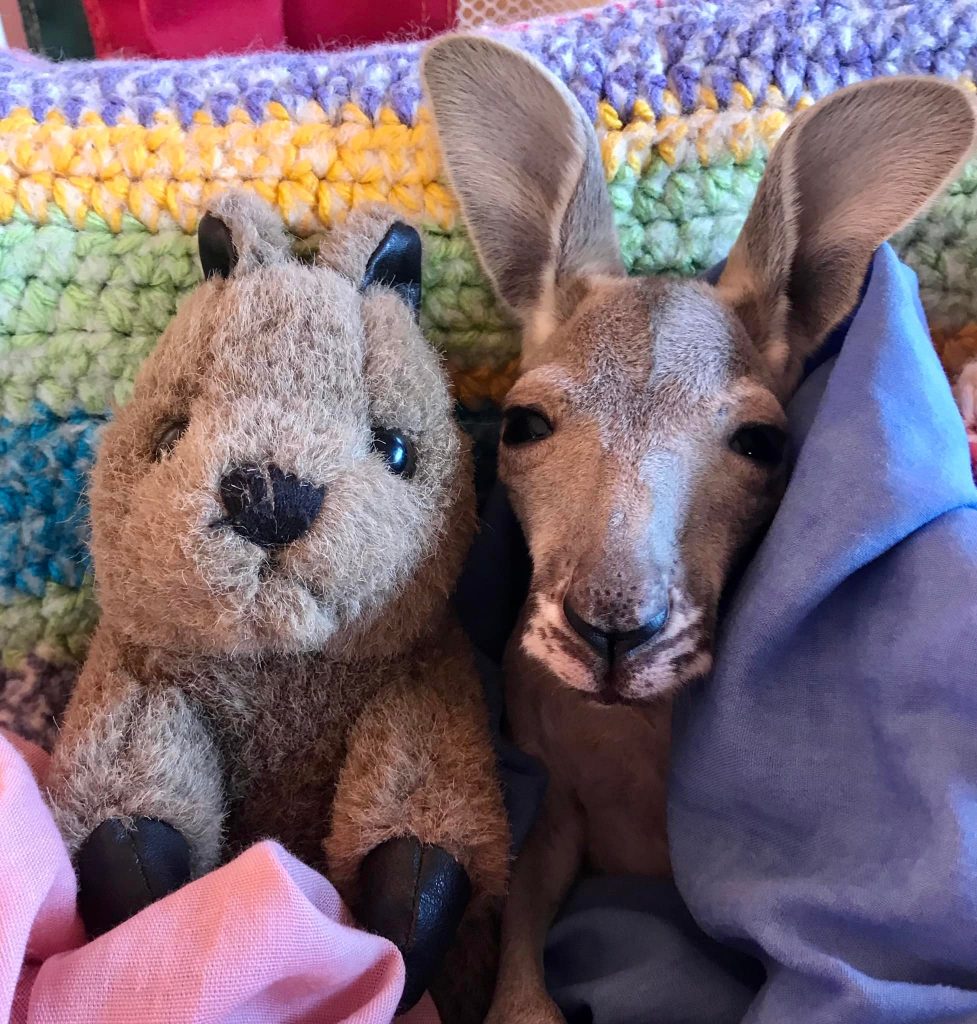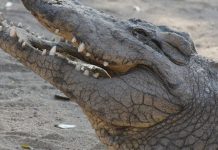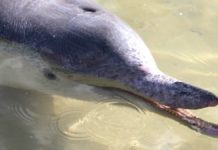
Kangaroos are synonymous with Australia, representing the country’s unique wildlife and natural heritage. They are fascinating creatures with a rich history and distinctive characteristics. The large marsupial is found exclusively in Australia and as a tree kangaroo in New Guinea. Although it is difficult to determine the exact population of kangaroos Down Under, it is estimated that there are more than 50 million of these skipping fellows across the country – that’s more kangaroos than residents!
Table of Contents
Origin of the kangaroo
Around 30 million years ago, in the Australian rainforest, a small animal resembling a possum came down from the tree tops to transform into variations of the unique creatures as we know them today. One of them was a giant kangaroo, the Procoptodon goliah. It weighed several hundred kilograms and became extinct around 15,000 years ago. Fossil records suggest that kangaroos have been present in Australia for at least 25 million years. They belong to the marsupial family Macropodidae, meaning “big foot.”
Since then, the famous red kangaroo still roams the plains of Australia. Weighing up to 90 kilograms, it is now the largest living marsupial.
The name kangaroo derives from the Aboriginal “Gangurru“. The story goes that when Europeans saw this strange animal, they asked an aborigine for its name and he replied gangurru, meaning “I don’t understand”! However this was later debunked by John B. Haviland during his linguistic research on the Guugu Yimidhirr people.
Where can I see kangaroos?
Kangaroos can be seen across Australia, particularly in national parks, wildlife reserves, and rural areas. Here are a few places where you’re sure to come across kangaroos in the wild on your trip to Australia:
- Pebbly Beach, Jervis Bay, Kosciuszko NP, Murramarang National Park (NSW)
- Bunya Mountains National Park, Cape Hillsborough Nature Tourist Park (QLD)
- Great Ocean Road & Grampians (VIC)
- Kangaroo Island, Flinders Ranges National Park (South Australia)
- Lucky Bay (WA) to see kangaroos on the beach
- In the Australian outback and bush, if you go a little inland, you’re sure to come across some 🙂

Special features of the kangaroo
The kangaroo is a nocturnal animal that lives in groups. It spends its days resting and comes out in the late afternoon and evening to feed, mainly on grass and leaves.
The kangaroo has powerful hind legs and large feet adapted for leaping. It uses its tail as a tripod when resting and as a pendulum when jumping. The kangaroo can jump up to 3 meters high and cover distances of over 9 meters in a single bound. Jumping is an efficient way for kangaroos to get around – some have been clocked at speeds of up to 64 kilometres an hour.
There are more than forty species of kangaroo. Of these, the red kangaroos are the best known. The male can measure up to 1.8 metres and weigh up to 90 kg. Female kangaroos have a pouch where their young, called joeys, develop after birth.
The kangaroo’s diet
Kangaroos are herbivores. Their diet mainly consists of grasses, leaves, and shrubs. They have chambered stomachs that help in digesting fibrous plant material through fermentation.
Kangaroos also have a specialised digestive system for processing fibrous foods. They spend a large part of their day feeding, mainly in the early morning and late afternoon, when temperatures are cooler. They move over vast areas in search of food, travelling long distances in search of suitable pasture.
Reproduction
Female kangaroos have a unique reproductive system. They can delay birth until conditions are favorable, a process known as embryonic diapause. Joeys are born tiny and undeveloped, continuing to grow in the mother’s pouch for several months.
The baby kangaroo is called Joey. Being a marsupial, the kangaroo gives birth to newborns in the embryonic stage of 4 weeks where the joey measures no more than 2cm. It goes straight into its mother’s pouch, which contains four “teats”. Each will supply a different type of milk depending on the baby’s stages of development. The baby will then attach itself to one of the nipples and will not leave it until it is able to feed itself (around 5 to 6 months later). The baby will live in its mother’s pouch and feed on her milk until then.
The female kangaroo keeps an embryo “on standby”, which will then develop once the baby already in the pouch emerges. A kangaroo can have up to 3 young at the same time. One baby out of the pouch, one in the pouch and a third “waiting” in the uterus.

Threats to the species
While kangaroos are not currently endangered, they face several threats:
- Habitat Loss: Urban expansion and agricultural activities reduce their natural habitats.
- Climate Change: Alters the availability of food and water sources.
- Hunting: They are hunted for their meat and skins.
So even if the species is not threatened, it has to survive the country’s extreme climatic conditions. These conditions are worsening with global warming.

Danger to humans
Kangaroos are generally not dangerous to humans. However, they can be defensive if they feel threatened. With its powerful hind legs and long claws, an attacking kangaroo can do a lot of damage – especially if it’s a large, territorial male!
In September 2022, the first fatal kangaroo attack for almost a century was recorded. A kangaroo killed a 77-year-old man who was keeping it as a pet. So it’s always important to remember that these are wild animals and to interact with them accordingly.
It’s important to keep a safe distance and avoid feeding or approaching wild kangaroos.



























